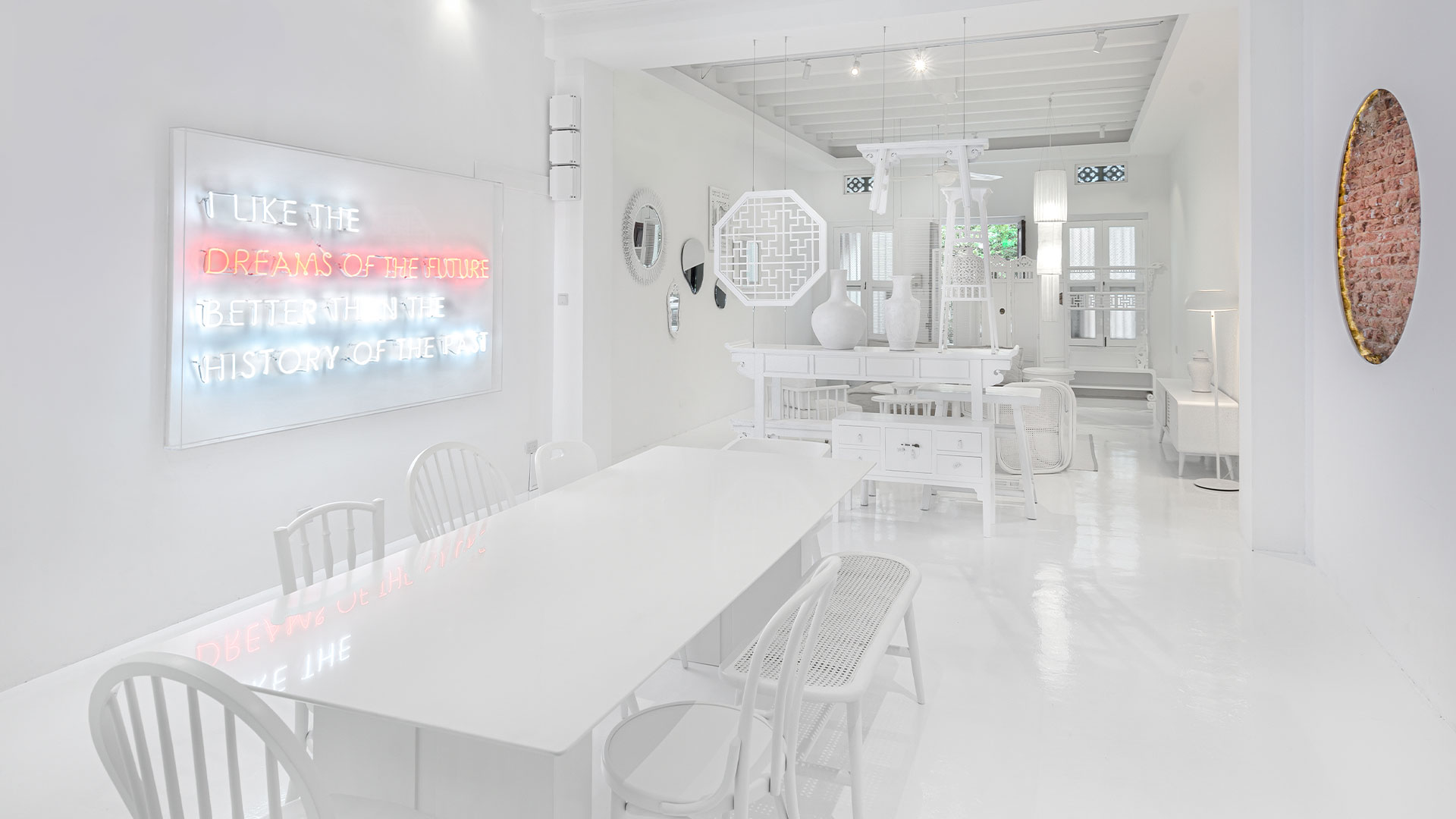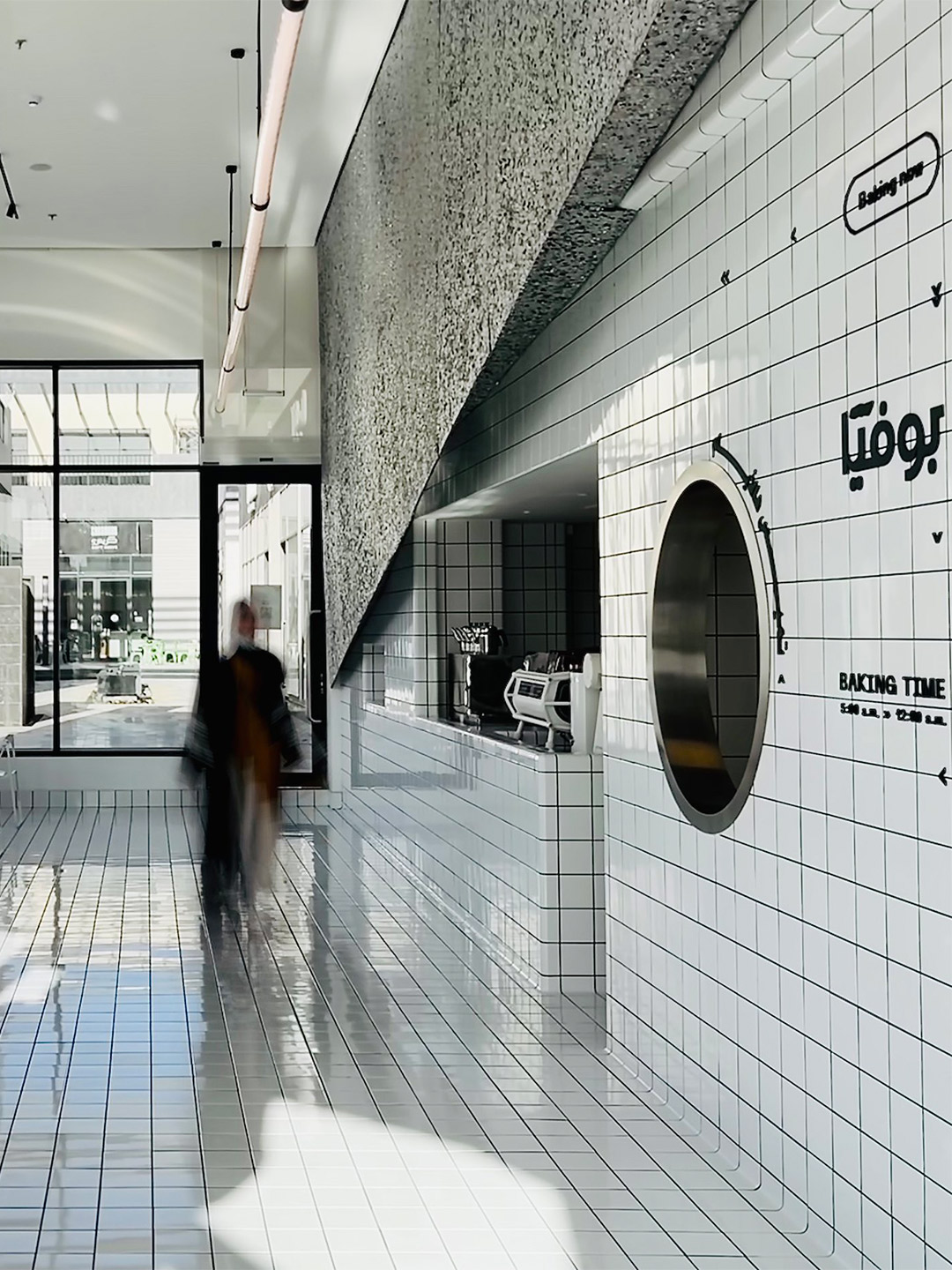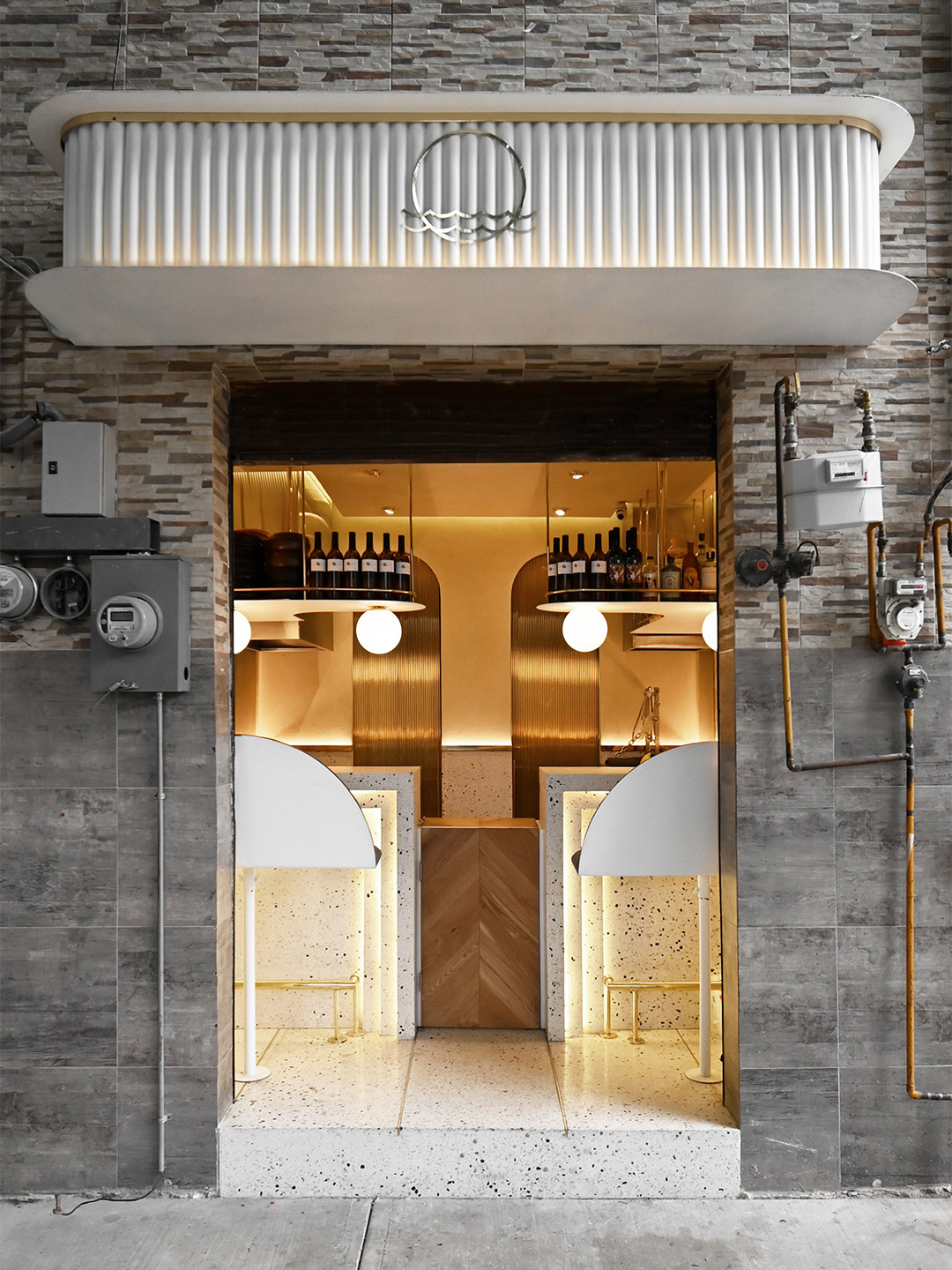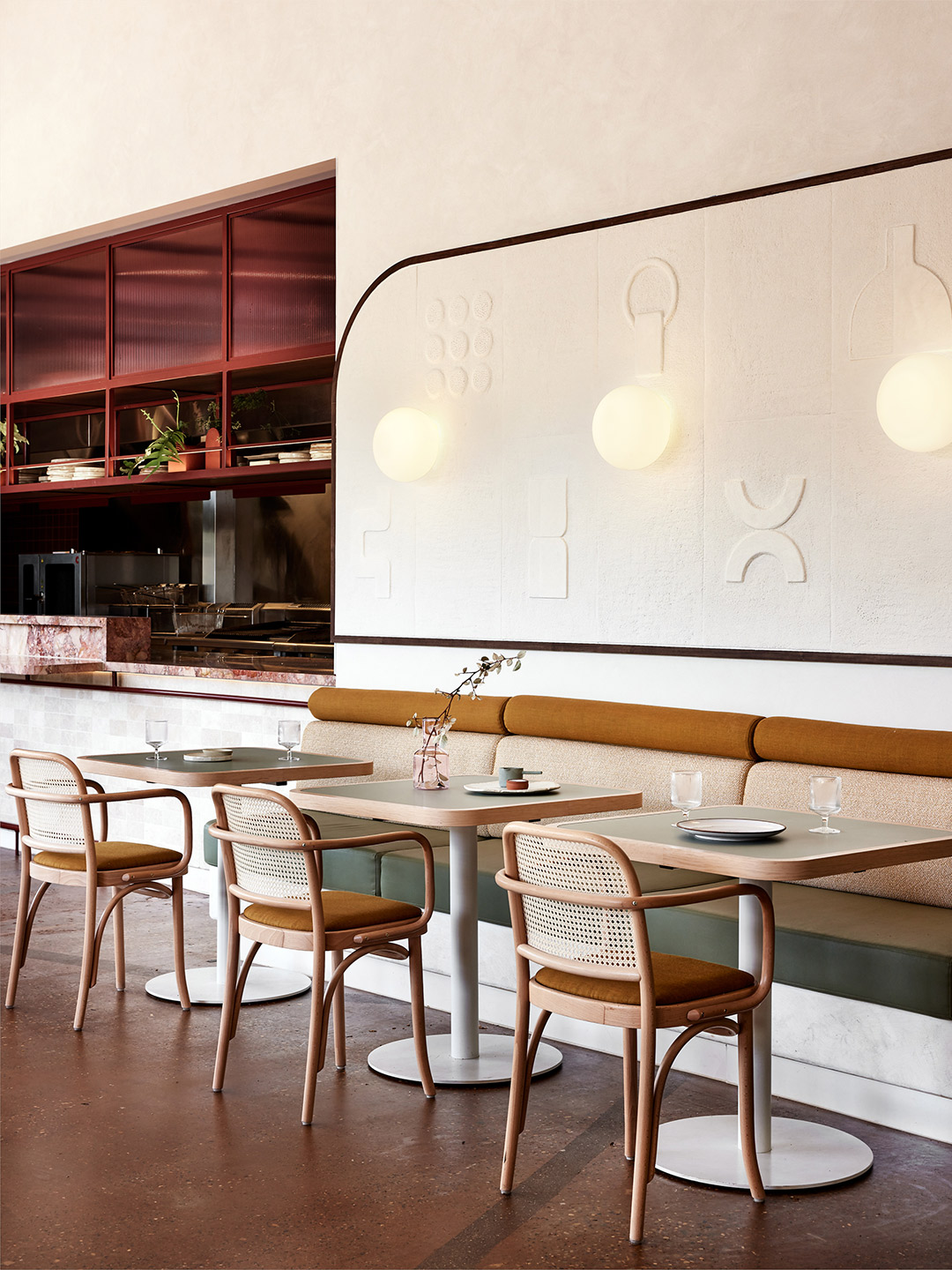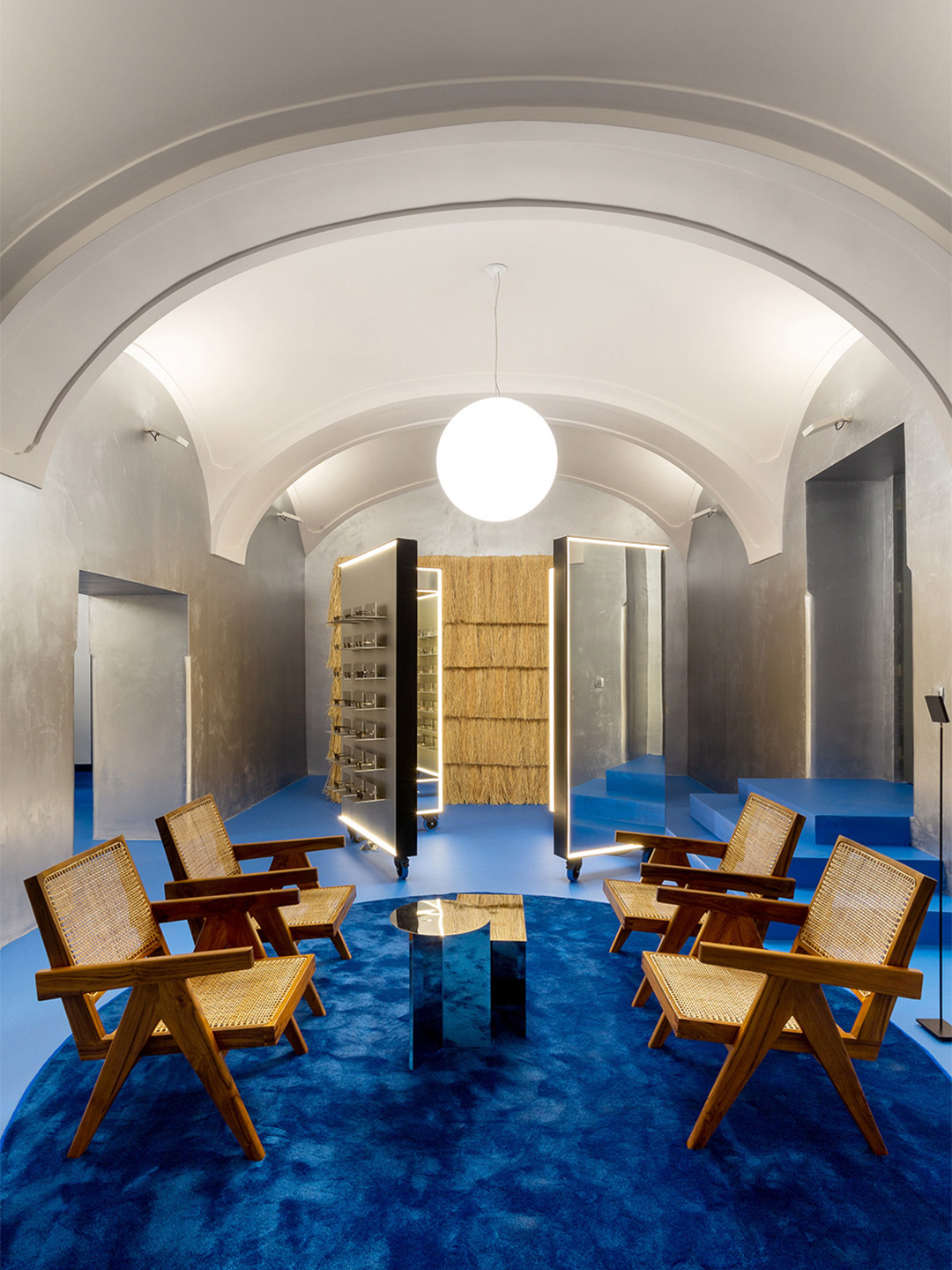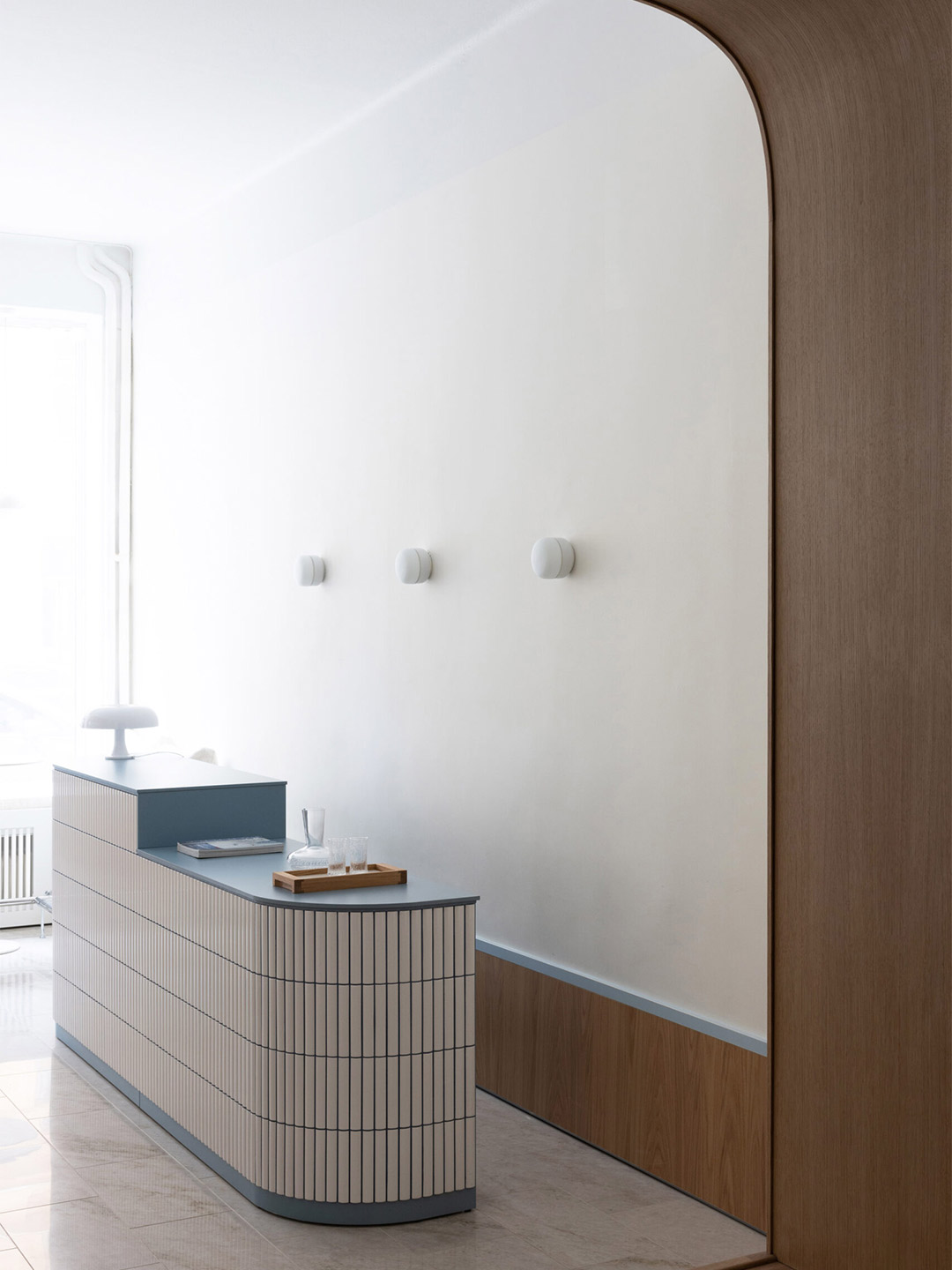Confidently rising to the challenge of creating a co-living space within a traditional shophouse on Singapore’s Blair Road, Ministry of Design (MOD) responded with a striking all-white scheme. Appropriately called Canvas House, the now ‘blank’ dwelling is targeted at expats seeking lengthy stays in the colourful Tanjong Pagar neighbourhood. “It is a neutral white canvas for the future to be dreamt upon, rather than a wholesale homage to the past,” says MOD founder-director Colin Seah.

The colonial shophouse buildings of Singapore, so-named due to the shared retail and residential functions, evolved from the early 19th century.
With a restricted budget and only four months to complete the project, MOD opted to blanket Canvas House with an all-white veil, a brave move that Colin says, “blurs the distinction between new and old” yet also “blurs the distinction between the spatial elements”, such as the intersection of ceilings and walls.
The objects, furniture and fittings that reside within the interior spaces – predominantly vintage, occasionally new – are painted the same shade of white as the house’s surfaces. “This allows the people using the space to truly activate the space, and be the prominent features, instead of merely inhabiting space,” says Colin.

Travelling through the dwelling, the only bursts of colour and immediately readable texture are provided by a series of what MDO call “playful, peek-a-boo vignettes”. These heightened sensory moments appear in the form of circular openings that reveal the original brickwork of the shophouse, and through the occasional discovery of traditional vintage screens and doors, decorative accessories and contemporary artwork.
MOD collaborated with local upcycling/plastic artist Kang on the creation of luminaires made from fused cling wrap, two of which glow softly at the entryway of Canvas House. The process of crafting these lighting pieces saw cling wrap layered and then heated to create a waterproof, leather-like material – a further celebration of old and new.








